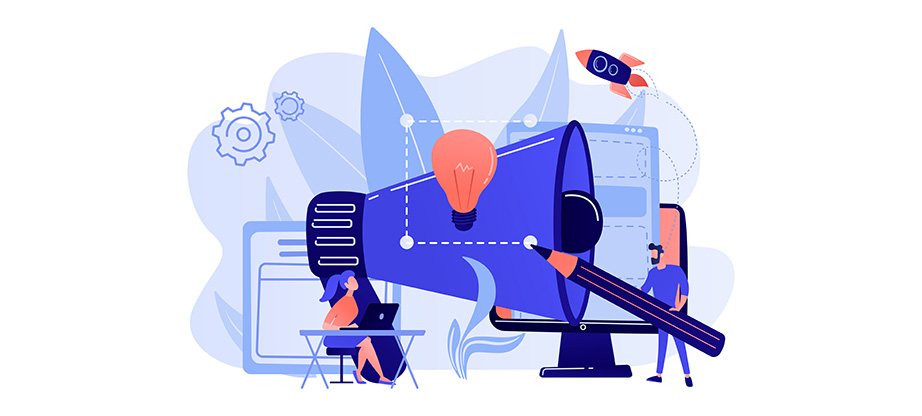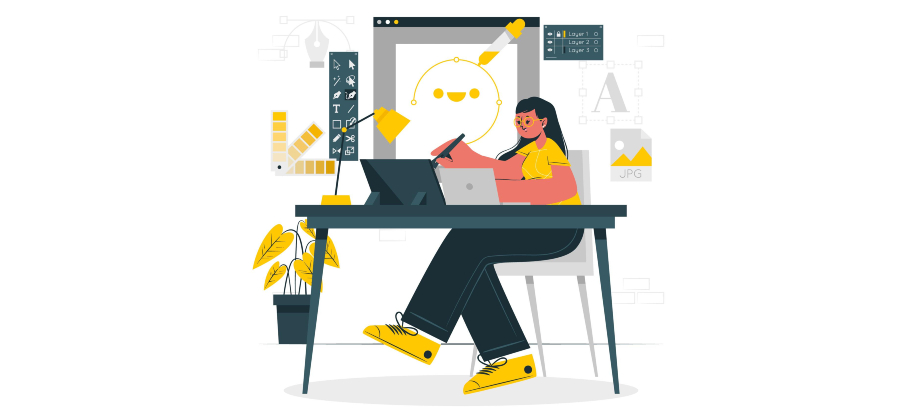How to Improve Your Performance as a Graphic Designer
This blog post will discuss key strategies for improving your performance as a graphic designer. From building a solid foundation in design principles and techniques to staying current with industry trends and developments to challenging yourself creatively and seeking out feedback and constructive criticism, these tips will help you to take your skills to the next level and succeed in the competitive world of graphic design.
So if you’re ready to take your career as a graphic designer to the next level, keep reading to learn more about improving your performance and standing out in the field.
Building a Strong Foundation in Design Principles and Techniques
As a graphic designer, it is essential to have a strong foundation in design principles and techniques in order to create visually appealing and effective designs. This involves understanding key concepts such as composition, color theory, and typography and applying these principles in your work.
The Importance of Understanding Design Principles
Understanding design principles such as composition, color theory, and typography is crucial for creating well-balanced, cohesive, and easy-to-understand designs.
Composition: refers to the arrangement of elements in a design, including the use of negative space, alignment, and hierarchy.
Color theory: the study of how colors interact with each other and how they can be used to create visual interest and convey emotions and meanings.
Typography: the art and technique of arranging type to make written font and language legible, readable, and appealing.
By understanding these fundamental design principles, you can create aesthetically pleasing designs that effectively convey your message. You will also be able to communicate your ideas effectively to clients and other stakeholders and to make informed decisions about the direction of your designs.
Developing Technical Skills Through Practice and Experimentation
In addition to understanding design principles, developing your technical skills as a graphic designer is important. This involves mastering the tools and software used in the field, such as Adobe Creative Suite, and learning how to use them effectively to create and manipulate designs.
Developing your technical skills requires regular practice and experimentation. This can involve trying out different tools and techniques, such as using visual collaboration, experimenting with new ideas, and challenging yourself to create designs outside of your comfort zone.
You can improve your technical abilities and create more polished and professional designs by continually pushing yourself and practicing your skills.
Staying Current with Industry Trends and Developments
As a graphic designer, staying current with industry trends and developments is essential to remain competitive and deliver high-quality work to your clients. This involves staying up-to-date with new software and tools, as well as keeping track of evolving design trends and best practices.
The Importance of Staying Up-to-Date with New Software and Tools
Graphic design is rapidly evolving, and new software and tools are constantly being introduced. To keep up with these developments, it is vital for graphic designers to update their skills and knowledge regularly. This can involve attending workshops, training sessions, or online courses to learn about new software and tools and develop your skills.
By staying up-to-date with the latest software and tools, you can improve your efficiency and productivity and deliver better work to your clients. You will also be better equipped to handle new design challenges and opportunities and stay ahead of industry competition.
Keeping Track of Evolving Design Trends and Best Practices
In addition to staying up-to-date with new software and tools, keeping track of evolving design trends and best practices is essential. This involves staying informed about the latest design styles, trends, and techniques and incorporating them into your work where appropriate.
Keeping track of design trends and best practices can help you create fresh, modern, and relevant designs. It can also help you anticipate your client’s needs and preferences and deliver designs aligned with their goals and objectives. By staying current with industry trends and developments, you can stay ahead of the competition and deliver better work to your clients.
Challenging Yourself Creatively
As a graphic designer, it is essential to challenge yourself creatively in order to continue growing and improving in the field. This can involve seeking new design challenges and opportunities, trying different styles and techniques, and developing a unique aesthetic.
Seeking Out New Design Challenges and Opportunities
One way to challenge yourself creatively as a graphic designer is to seek new design challenges and opportunities. This can involve taking on new projects outside your comfort zone, working with new clients or industries, or exploring new design mediums or formats.
You can push yourself to learn and grow as a designer by seeking new design challenges and opportunities. You will also be able to expand your portfolio and showcase your skills to a broader audience, which can help to advance your career and open up new opportunities.
Trying out Different Styles and Techniques
Another way to challenge yourself creatively as a graphic designer is to try out different styles and techniques. This can involve experimenting with new design styles, working with different mediums or formats, or incorporating new techniques into your work.
You can expand your creative horizons and develop a more diverse skill set by trying out different styles and techniques. You will also be able to create more exciting and unique designs, which can help to set you apart from other designers in the field.
Developing a Unique Aesthetic
In addition to trying out different styles and techniques, a graphic designer must also develop a unique aesthetic. This involves defining your own personal style and aesthetic and incorporating it into your work consistently and recognizably.
A unique aesthetic can help you stand out in the crowded world of graphic design. It can also help you to attract the attention of potential clients and collaborators and to build a loyal following of fans and admirers. By developing a unique aesthetic, you can differentiate yourself from other designers and establish your own brand and identity in the industry.
Seeking Out Feedback and Constructive Criticism
As a graphic designer, seeking feedback and constructive criticism is crucial to improve and grow in your career. This involves seeking feedback from peers and mentors and using it to identify areas for improvement and refine your skills and abilities.
The Importance of Seeking Feedback from Peers and Mentors
Seeking out feedback from peers and mentors is crucial for improving as a graphic designer. By getting feedback from others who are more experienced or knowledgeable than you, you can gain valuable insights into your work and identify areas for improvement.
Feedback from peers and mentors can also help to provide you with a fresh perspective on your work and to highlight aspects of your designs that you may not have noticed yourself. It can also help you to develop new ideas and approaches and to grow as a designer.
Using Criticism to Improve and Grow as a Designer
In addition to seeking out feedback, it is also vital to use criticism constructively to improve and grow as a designer. This involves listening to criticism with an open mind and using it to identify areas for improvement and to refine your work.
When receiving criticism, asking clarifying questions and considering the feedback from different perspectives can be helpful. It can also be useful to take a step back and reflect on the feedback and to think about how you can incorporate it into your work in a positive way. Constructively using criticism, you can improve your designs and grow as a designer.
Conclusion
The graphic design field is constantly evolving, and it is essential for designers to learn and develop their skills to succeed continually. Whether you are just starting out in the field or are an experienced designer looking to take your career to the next level, building a solid foundation in design principles and techniques, staying current with industry trends and developments, challenging yourself creatively, and seeking out feedback and constructive criticism are all key strategies for improving your performance as a graphic designer.
By continually learning and growing as a designer, you can deliver better work to your clients, advance your career, and succeed in the competitive world of graphic design.


